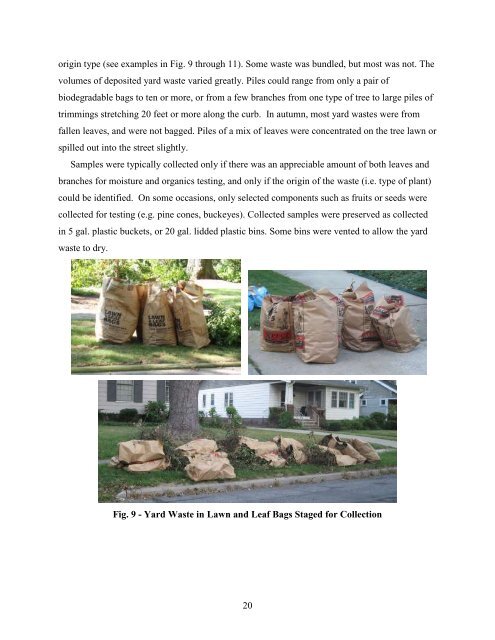Final Report - Ohio Department of Transportation
Final Report - Ohio Department of Transportation
Final Report - Ohio Department of Transportation
You also want an ePaper? Increase the reach of your titles
YUMPU automatically turns print PDFs into web optimized ePapers that Google loves.
origin type (see examples in Fig. 9 through 11). Some waste was bundled, but most was not. The<br />
volumes <strong>of</strong> deposited yard waste varied greatly. Piles could range from only a pair <strong>of</strong><br />
biodegradable bags to ten or more, or from a few branches from one type <strong>of</strong> tree to large piles <strong>of</strong><br />
trimmings stretching 20 feet or more along the curb. In autumn, most yard wastes were from<br />
fallen leaves, and were not bagged. Piles <strong>of</strong> a mix <strong>of</strong> leaves were concentrated on the tree lawn or<br />
spilled out into the street slightly.<br />
Samples were typically collected only if there was an appreciable amount <strong>of</strong> both leaves and<br />
branches for moisture and organics testing, and only if the origin <strong>of</strong> the waste (i.e. type <strong>of</strong> plant)<br />
could be identified. On some occasions, only selected components such as fruits or seeds were<br />
collected for testing (e.g. pine cones, buckeyes). Collected samples were preserved as collected<br />
in 5 gal. plastic buckets, or 20 gal. lidded plastic bins. Some bins were vented to allow the yard<br />
waste to dry.<br />
Fig. 9 - Yard Waste in Lawn and Leaf Bags Staged for Collection<br />
20
















